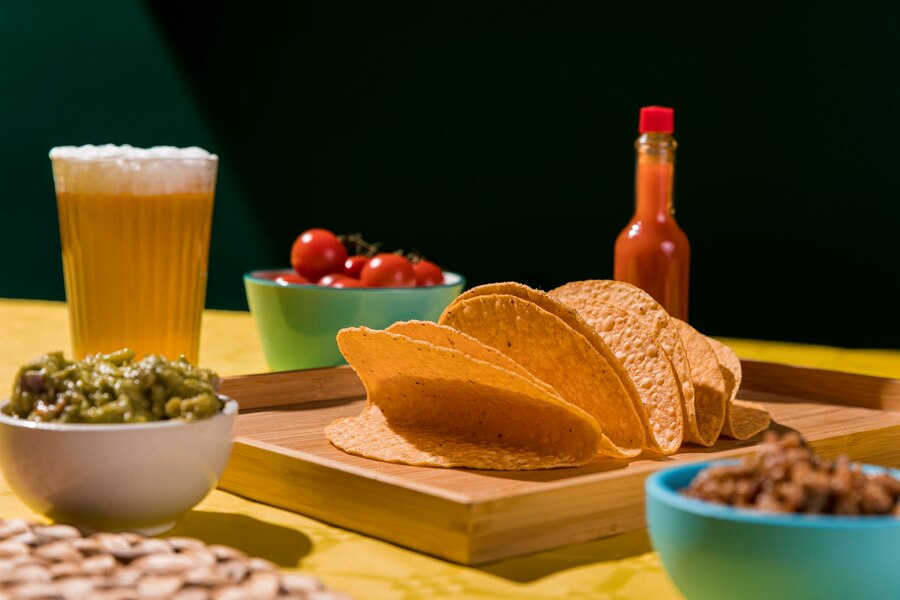Mexican beers have gained worldwide popularity for their refreshing taste, rich history, and unique brewing styles. From light lagers perfect for a sunny day to robust dark beers with deep flavors, the variety of Mexican beers offers something for every palate. In this article, we’ll explore the history, types, and notable brands of Mexican beers, as well as their cultural significance and how to enjoy them best.
A Brief History of Mexican Beer
The history of beer in Mexico dates back to the 16th century, introduced by Spanish conquistadors and later influenced by German immigrants in the 19th century. The blend of these cultural influences, combined with local ingredients and brewing techniques, resulted in a distinctive Mexican beer style.
Types of Mexican Beers
1. Pale Lagers
Pale lagers are the most common type of Mexican beer. They are light, crisp, and highly carbonated, making them extremely refreshing.
- Corona Extra: One of the most famous Mexican beers globally, Corona is a pale lager known for its light, crisp taste and often enjoyed with a wedge of lime.
- Sol: Similar to Corona, Sol is another light and refreshing pale lager, perfect for a hot day.
2. Vienna Lagers
Vienna lagers are characterized by their amber color and slightly more robust flavor compared to pale lagers.
- Dos Equis Amber: This beer has a rich, amber color and a smooth, malty flavor with hints of caramel.
- Negra Modelo: Often considered one of the best examples of the Vienna lager style, Negra Modelo has a dark amber hue and a well-balanced taste with a hint of sweetness.
3. Dark Beers
Mexican dark beers are often brewed in the Munich dunkel or bock style, featuring deeper flavors and a more substantial body.
- Bohemia Obscura: This is a dark beer with a rich, malty flavor and a hint of caramel, making it a
delightful choice for those who prefer a more robust beer.
- Modelo Negra: Another excellent example of a dark beer, Modelo Negra offers a deep, amber color and a smooth, slightly sweet flavor with hints of roasted malt.
Notable Mexican Beer Brands
Several brands have become synonymous with Mexican beer, each offering a range of products that cater to different tastes.
1. Grupo Modelo
Grupo Modelo is one of Mexico’s largest beer producers, known for its iconic brands such as:
- Corona: The flagship brand, known worldwide.
- Modelo Especial: A popular pale lager with a crisp, clean taste.
- Negra Modelo: The renowned dark beer with a smooth, rich flavor.
2. Cervecería Cuauhtémoc Moctezuma (Heineken Mexico)
This brewery produces several well-known beers, including:
- Sol: A light and refreshing pale lager.
- Tecate: A crisp, easy-drinking beer that is a staple in many Mexican households.
- Dos Equis: Available in both Lager Especial (a pale lager) and Amber (a Vienna lager).
3. Cervecería Minerva
A relatively newer player in the Mexican beer scene, Cervecería Minerva focuses on craft beers and has gained a reputation for quality and innovation.
- Minerva Pale Ale: A craft beer with a balanced hoppy flavor and a smooth finish.
- Minerva Stout: A rich, dark beer with deep flavors of coffee and chocolate.
Cultural Significance of Mexican Beer
Beer holds a special place in Mexican culture, often associated with social gatherings, celebrations, and relaxation. It’s common to enjoy a cold beer with friends and family during meals, at the beach, or while watching a football match. Traditional Mexican cuisine pairs exceptionally well with beer, enhancing the flavors of dishes like tacos, ceviche, and mole.
How to Enjoy Mexican Beer
To fully appreciate Mexican beer, consider these tips:
- Serve Cold: Most Mexican beers are best enjoyed cold, ideally between 35-40°F (1.5-4.5°C).
- Add a Lime: For pale lagers like Corona or Sol, adding a wedge of lime to the bottle or glass can enhance the flavor and add a refreshing citrus note.
- Pair with Food: Mexican beers pair wonderfully with a variety of foods. Light lagers complement spicy dishes, while darker beers can be enjoyed with hearty, savory meals.
- Try Craft Beers: Explore the growing craft beer scene in Mexico for unique and innovative brews that offer new flavor experiences.
Conclusion
Mexican beers offer a delightful journey through a diverse landscape of flavors and traditions. From the globally recognized Corona to the rich and robust Negra Modelo, there is a Mexican beer for every occasion and preference. Whether you’re enjoying a casual get-together, a festive celebration, or simply relaxing at home, a cold Mexican beer can enhance the experience. So next time you’re looking for a refreshing beverage, consider reaching for one of Mexico’s finest brews.
FAQs
1. What is the most popular Mexican beer?
- Corona Extra is arguably the most popular Mexican beer worldwide, known for its light, crisp taste and often enjoyed with a wedge of lime.
2. What types of Mexican beers are there?
- Mexican beers can be categorized into pale lagers, Vienna lagers, and dark beers, each offering unique flavors and characteristics.
3. How should I serve Mexican beer?
- Most Mexican beers are best served cold, ideally between 35-40°F (1.5-4.5°C). Adding a lime wedge to pale lagers can enhance their flavor.
4. What foods pair well with Mexican beer?
- Light lagers pair well with spicy dishes, seafood, and light snacks, while darker beers complement hearty, savory meals like roasted meats and mole.
5. Are there craft beers in Mexico?
- Yes, the craft beer scene in Mexico is growing, with breweries like Cervecería Minerva offering a range of innovative and high-quality beers.










